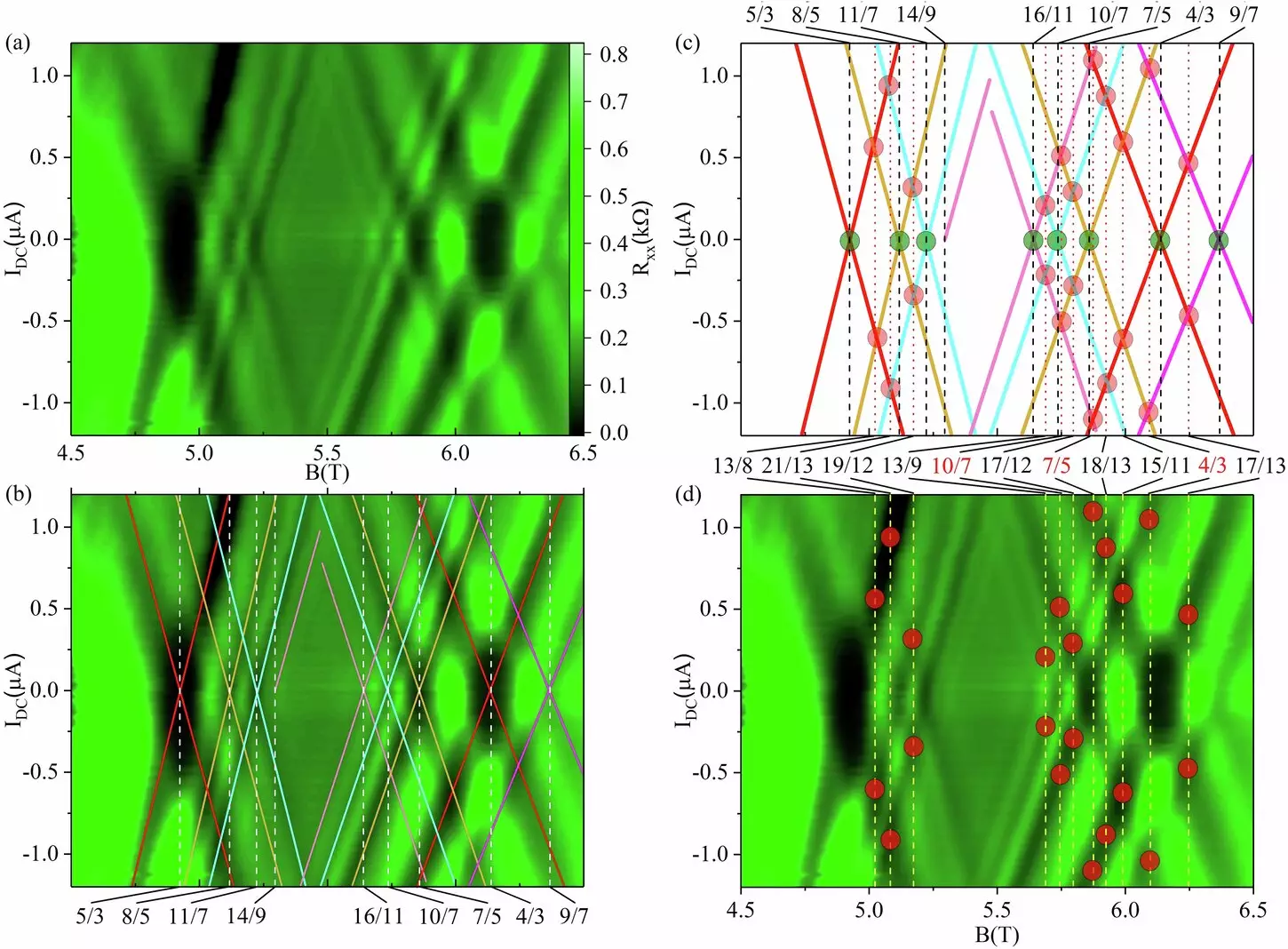In the fascinating world of condensed matter physics, researchers are unearthing unique phenomena that challenge our traditional understanding of quantum mechanics. A recent investigation led by Professor Ramesh G. Mani and Ph.D. graduate U. Kushan Wijewardena at Georgia State University has ventured into the mysterious territory of fractional quantum Hall effects (FQHE). This study, published in the journal *Communications Physics*, explores how particle behavior can drastically change under specific physical conditions, akin to a two-dimensional flatland where particles like electrons can wear different ‘masks’ based on external influences.
The quantum Hall effect journey began in 1980 with Klaus von Klitzing’s groundbreaking discovery, revealing that a simple electrical measurement could yield remarkably precise values for fundamental constants of our universe. This pivotal finding laid the groundwork for decades of research, culminating in a Nobel Prize in 1985. Subsequent discoveries, including those related to the FQHE, emphasized that particles in this unusual realm might possess fractional charges, a notion that would earn yet another Nobel Prize in 1998. The evolution of this field continued with the advent of materials like graphene, which introduced the notion of massless electrons confined within the constraints of flatland.
The implications of studying fractional quantum Hall effects extend well beyond academic curiosity. Researchers are now looking toward the evolution of electronics and materials technology, with the potential to develop energy-efficient and flexible devices. Innovations inspired by such studies could eventually lead to advanced applications in quantum computing, topological quantum computers, and even new types of sensors. The team’s work highlights not just the theoretical aspects, but the practical applications that such groundbreaking research can enable in today’s technological landscape.
With an experimental setup operating under extreme conditions—near absolute zero and under a magnetic field vastly more potent than Earth’s own—the researchers have undertaken a meticulous examination of high-mobility semiconductor structures. By layering gallium arsenide and aluminum gallium arsenide, they create an environment conducive to studying electrons in this quasi-two-dimensional space. The team discovered unexpected behaviors, including state splitting and crossing of branches, revealing rich non-equilibrium properties of these systems.
Mani describes their research as akin to exploring the upper floors of a building—a quest for hidden, complex behaviors within the confines of well-researched phenomena. The findings signify a leap in understanding the FQHE, suggesting that it is not merely a predictable effect but a complex interplay that warrants further investigation. This newfound perspective opens up avenues for exploring excited states of fractional quantum Hall systems, an area that had remained elusive until now.
Wijewardena’s reflections on their findings add another layer to this intriguing discussion. He highlights the intricate nature of the experimental process and the years of effort that culminated in these discoveries. His insights underline a crucial takeaway: the pursuit of knowledge in physics is often a painstakingly slow journey towards clarity, layered with research and speculation.
Implications for Future Research and Technology
The potential repercussions of these findings extend beyond immediate theoretical enhancements. The hybrid origin of the observed non-equilibrium excited states hints at a fundamentally new approach to understanding FQHE. Such insights could profoundly influence future technological developments, particularly in fields like quantum computing and materials science, which increasingly rely on developing novel states of matter for enhanced performance.
As the research progresses, Mani, Wijewardena, and their colleagues are set to explore even more extreme conditions and innovative measurements, continually map out the landscape of flatland physics. Their resolve to uncover the nuances of quantum behavior points to an exciting frontier in condensed matter physics, buoyed by new avenues of inquiry and fresh perspectives on longstanding questions.
As we stand on the precipice of significant advancements in understanding our universe, the work of researchers like Mani and Wijewardena illustrates the dynamic interplay of theory and experiment in physics. By pushing the boundaries of what’s achievable within the realm of fractional quantum Hall effects, they are fostering the exploration of promising new territories equipped with the potential to revolutionize the field of condensed matter physics. Ultimately, their efforts lay a foundational framework for the coming innovations in technology and energy efficiency that are crucial for our high-tech future.


Leave a Reply